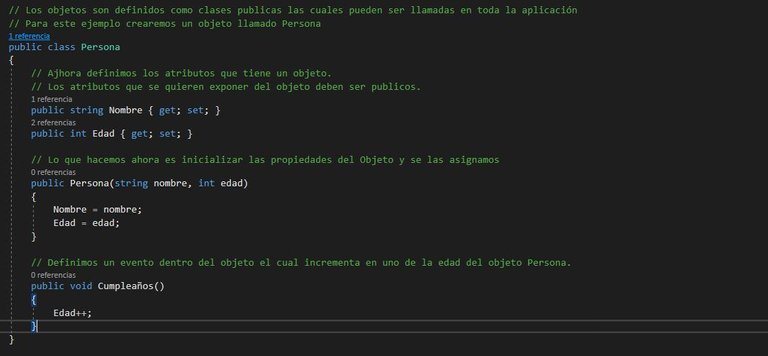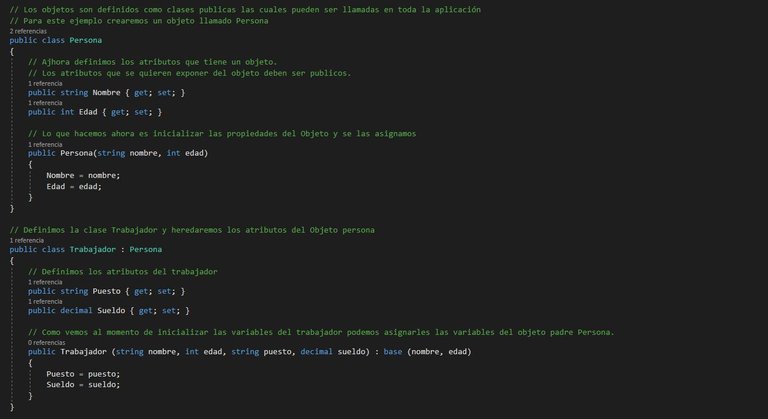Hello friends from Steemit, last week make a publication indicating four reasons why one should start with JavaScript in which mention some terms used in programming. Well now I bring the details of the most used terms and some practical examples so they can be understood.
Maybe I can not cover all the known terms, but if I try to show you the most used, please feedback this publication with your comments to be able to publish a second part of this.

==============================================================
Variable !Fuente
In programming, a variable is a memory space reserved for storing a value that corresponds to a type of data supported by the programming language. A variable is represented and used through a label (a name) that a programmer assigns or that is already predefined.
A variable, usually, as its name implies, can vary its value during the execution of the program. Depending on the programming language used, you can also change the type of data it stores.
-
Arrays
An array is a data structure, or more technically, a memory space that allows you to store a collection of elements, all of the same type.
It is convenient to imagine an arrangement as a contiguous sequence of cells (memory spaces), or boxes, in each of which an element of the collection can be saved.

Matrices
A matrix is a data structure, or more technically, a memory space that allows you to store a collection of elements, all of the same type.
The difference with the arrangements is that, in the matrices, the elements are not linearly organized, but their organization is two-dimensional, that is, in rows and columns.

Methods !Fuente
A method is a subroutine whose code is defined in a class and can belong either to a class, such as class or static methods, or to an object, as is the case with instance methods.
Analogously to the procedures in imperative languages, a method generally consists of a series of sentences to carry out an action, a set of input parameters that will regulate action or, possibly, an output value (or return value) of some kind.

Functions !Fuente
A function is a part of a program (subroutine) with a name, which can be invoked (called execution) from other parts as many times as desired. A block of code that can be executed as a functional unit. Optionally, you can receive values; it runs and can return a value. From the point of view of the organization, we can say that a function is something that allows a certain order in a tangle of algorithms.
The declarations of functions are generally specified by: A unique name in the field: Name of the function with which it is identified and distinguished from others. There can not be another function or procedure with that name (except overload or polymorphism in object-oriented programming). A type of return data: data type of the value that the function will return upon completion of its execution. A list of parameters: Specification of the set of arguments (can be zero, one or more) that the function must receive to perform its task. The code or orders of processing: set of orders and sentences that the function must execute.

Object !Fuente
It is an abstract entity used in programming that allows to separate the different components of a program, thus simplifying its elaboration, debugging and subsequent improvements.
The objects integrate, unlike the procedural methods, both the procedures and the variables and data relating to the object.
Objects are given certain characteristics in real life. Each part of the program that you want to perform is treated as an object, and these parts are independent of each other.
The objects are composed of 3 fundamental parts: methods, events and attributes.
Events !Fuente
They are those actions through which the object recognizes that it is interacting with it. In this way the object is activated and responds to the event as programmed in its code.
An example in real life, let's say we have a clock that is a set of attributes (physical and logical) which has certain tasks (Events). An event would be the sound of the alarm, your programs through an attribute when the clock should activate the alarm sounding event.
In summary, events are actions that an object can perform.
Attributes !Fuente)
Characteristics that apply to the object only in the case in which it is visible on the screen by the user; then its attributes are the aspect that reflects, both in color, size, position, whether or not it is enabled.
Following the previous example, the attribute that has the object would be the time in which you want the alarm to sound, are properties of the object that one can define.

Inheritance !Fuente
The inheritance (which is usually called subclass) comes from the fact that the subclass (the new created class) contains the attributes and methods of the primary class. The main advantage of inheritance is the ability to define new attributes and methods for the subclass, which are then applied to inherited attributes and methods.
This particularity makes it possible to create an increasingly specialized hierarchical class structure. The great advantage is that one should no longer start from scratch when he wants to specialize an existing class. As a result, you can purchase class libraries that offer a base that you can specialize at will (the company that sells these classes tends to protect member data by using encapsulation).
Encapsulation is a mechanism that consists of organizing data and methods of a structure, reconciling the way in which the object is implemented, that is, avoiding access to data by any means other than those specified. Therefore, encapsulation guarantees the integrity of the data that an object contains.

==============================================================
These are some of the terms most used in programming, I hope you can suggest other terms to be included in a subsequent publication.
I hope this publication is to your liking.
¡@pxndit4! Muy bueno el contenido, sigue asi!
Esta publicación es apoyada por la comunidad de UNEEVERSO, para que al obtener votos automatizados pueda conseguir PROMOCIÓN GRATUITA y pueda darse a conocer a un público más grande. Este contenido lo merece, considera darle reesteem.
¿Te interesa, obtener upvotos y dar a conocer tu publicación?
Te invitamos a unirte a nuestra comunidad, cada día crece más y tu puedes crecer con nosotros.
¿Te interesa conocer sobre nuestro proyecto?: https://goo.gl/cuFExt
¿Te interesa conocer sobre nosotros y sobre actualizaciones de uneeverso.com?:
* Acceso a Uneeverso : https://www.uneeverso.com/registro
* Acceso temporal a Uneeverso : http://uneeverso-oficial.mircloud.host/registro
* Uneeverso en discordapp: https://discord.gg/Y5kM5Kj
* Siguenos: @blickyer @yunior.selbor @sweetvenon @arevaloarcadio @baudilio @jnavarrotovar
This post has received a 50.00 % upvote from @astrobot thanks to: @pxndit4.
Congratulations! This post has been upvoted from the communal account, @minnowsupport, by pxndit4 from the Minnow Support Project. It's a witness project run by aggroed, ausbitbank, teamsteem, theprophet0, someguy123, neoxian, followbtcnews, and netuoso. The goal is to help Steemit grow by supporting Minnows. Please find us at the Peace, Abundance, and Liberty Network (PALnet) Discord Channel. It's a completely public and open space to all members of the Steemit community who voluntarily choose to be there.
If you would like to delegate to the Minnow Support Project you can do so by clicking on the following links: 50SP, 100SP, 250SP, 500SP, 1000SP, 5000SP.
Be sure to leave at least 50SP undelegated on your account.